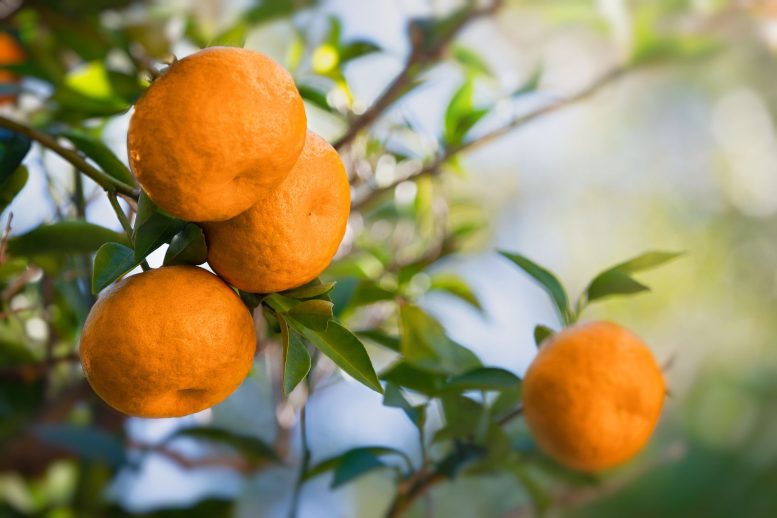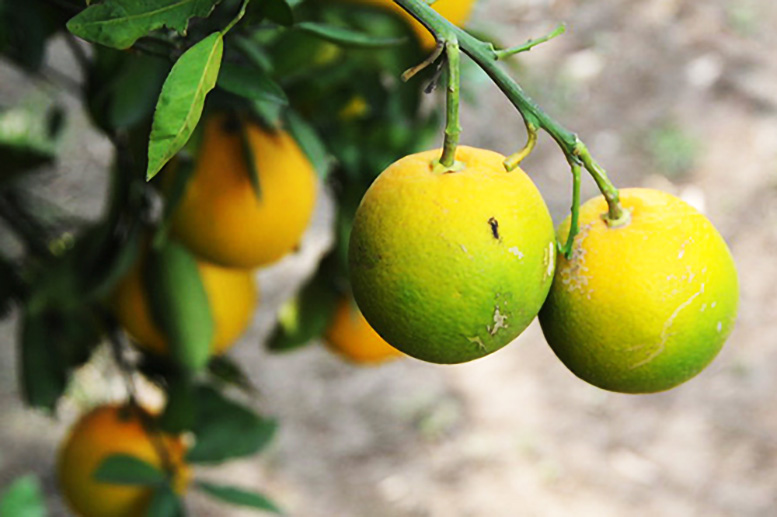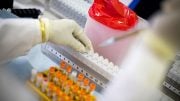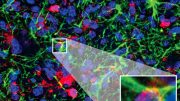
Researchers have made progress against citrus greening disease by developing hybrid citrus trees that produce desirable orange-like fruit and resist the disease. Through genetic analysis, they’ve created tools for early flavor profile screening, marking a significant step in ensuring future hybrids combine disease tolerance with the essential sweet orange flavor.
It’s one thing for a hybrid citrus tree to tolerate citrus greening disease (a.k.a. Huanglongbing) and quite another if it also produces orange-like fruit—especially if the juice makes for a delicious breakfast beverage! Now, that holy grail of traits could be closer at hand, thanks to the chemical and genetic sleuthing of a team of Agricultural Research Service (ARS) and University of Florida Institute of Food and Agricultural Sciences (UF/IFAS) scientists.
Huanglongbing (HLB) was first detected in Florida’s Miami-Dade County in 2005. The disease has since spread throughout Florida, threatening a citrus industry there that contributes nearly $7 billion to the state’s economy and employs more than 32,000 individuals. The disease also poses a threat to other U.S. citrus-growing areas, including California, Louisiana and Texas.
In Florida, sweet oranges like Valencia, Hamlin, and Midsweet are the main varieties used to make orange juice. However, sweet orange (Citrus sinensis) is highly susceptible to HLB, which is caused by the bacterium Candidatus Liberibacter asiaticus and transmitted by insects called Asian citrus psyllids. The disease causes citrus trees to become unproductive and fruit quality to decline. In sweet oranges, for example, the fruit of diseased trees tends to stay green and produce bitter-tasting juice, which diminishes their marketability but poses no consumer danger. Infected trees cannot currently be cured.
Research Efforts and Historical Background
Scientists are investigating countermeasures on multiple fronts in hopes of providing the Sunshine State—which went from producing nearly 80 percent of U.S. non-tangerine citrus fruit to less than 42 percent—with a ray of hope. ARS efforts indirectly took root in the 1960s, when agency scientists created citrus hybrids using a relative named Poncirus trifoliata (the cold-hardy trifoliate orange) to shore up the trees’ cold tolerance. The start of the HLB epidemic more than four decades later revealed something else: the hybrids also appeared to tolerate the new disease, prompting intensive research by ARS and the UF/IFAS to understand why and how this related to fruit quality.

A genetic discovery by ARS and University of Florida scientists could speed the search for hybrid citrus trees that tolerate citrus greening disease and produce orange-like fruit ideal for making juice. Credit: David Bartels, USDA
Initial field tests and flavor evaluations showed that some of the Poncirus-derived hybrids—with the notable exception of US Sundragon—tended to produce juice with an undesirable off-flavor but aroma profiles similar to sweet orange. So, the scientists re-assessed their approach. They decided that, in addition to using data from analyses of juice-aroma compounds, they needed to get a better handle on the individual chemicals that give orange juice its characteristic flavor. And they did just that, identifying 26 total flavor compounds and seven chemicals called esters deemed essential to the desired flavor profile of orange juice.
Advances in Flavor Profile Analysis and Genetic Screening
That advance, in turn, enabled the team to pinpoint the esters’ master gene, CsAAT1, and make what’s known as a DNA marker for it—a tool that can be used to quickly check for the genetic presence of a desirable trait in germinated seeds versus observing its physical expression in 10- or 15-year-old mature plants.
“Breeders can use this DNA marker to screen seedlings for desired flavor profiles at an early stage,” explain Anne Plotto and Jinhe Bai, plant physiologists with the ARS Citrus and Other Subtropical Products Research Unit in Fort Pierce, Florida. “By incorporating this gene into the genetic makeup of HLB-tolerant hybrids derived from Poncirus trifoliata and mandarin, or from many other possible crosses with the same objective, breeders can ensure that these new hybrids not only possess HLB tolerance but also maintain the characteristic sweet orange flavor.”
A full description of the team’s approach was published February 28, 2024 in the journal Science Advances.
Plotto and Bai, the principal investigators, co-authored the paper together with 11 other collaborators from ARS’ U.S. Horticultural Research Laboratory in Fort Pierce, Florida, and Daniel K. Inouye U.S. Pacific Basin Agricultural Research Center in Hilo, Hawaii, and UF/IFAS’ Citrus Research and Education Center in Lake Alfred, Florida, and Gulf Coast Research and Education Center in Balm, Florida.
The researchers caution that even with the use of high-tech tools like machine learning, the first commercial releases of orange-like hybrids with HLB tolerance will be contingent on several more years of testing and refinement.
Nonetheless, “this research represents a significant step in citrus breeding, combining traditional techniques with modern genetic tools,” said Plotto and Bai. “The approach could also serve as a model for other crop improvement programs,” they added.
Reference: “Chemical and genetic basis of orange flavor” by Zhen Fan, Kristen A. Jeffries, Xiuxiu Sun, Gabriela Olmedo, Wei Zhao, Matthew R. Mattia, Ed Stover, John A. Manthey, Elizabeth A. Baldwin, Seonghee Lee, Frederick G. Gmitter, Anne Plotto and Jinhe Bai, 28 February 2024, Science Advances.
DOI: 10.1126/sciadv.adk2051









That’s interesting – I have often noted with amazement the entirely different flavors of mandarins/tangerines in the same package of fruits from a supermarket. I eat a lot of mandarins or tangerines & they sometimes are really strange in flavor making me wonder if they have been soaked in something to force them to ripen faster after picking ! One batch I bought was so ‘juicy’ but nasty tasting that I worried about what they had done to them & ended up throwing most of them out !
Scientists need to stop playing God and let fruits & vegetables grow the way God intended.
Sure. Rosa. No enjoys oranges or orange juice, right? We won’t miss it much.
My question to you is this – why would God give men the intelligence to be able to figure out how to alter a strain of orange to resist this blight, if he didn’t intend is to make the effort???
Almost every food plant we use today is the result of humans developing wild plants. Most wild foods are nowhere near as tasty as fruitful as the versions man has developed. God has nothing to do with it.
You know oranges and watermelons mb a few more fruits etc used to have seeds but not more this is why scientists need to work on saving lives not killing us